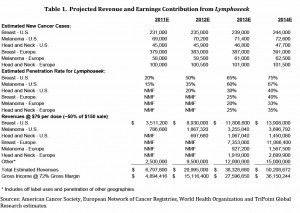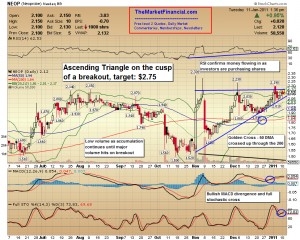his post describes our model of
NVIDIA's (NASDAQ:
NVDA) Income Statement for fiscal 2011's fourth quarter, which will end on 30 January 2010.
The purpose of the model is to establish a baseline for identifying surprises, positive or negative, in the quarterly results the company will report. Estimates for each line of the Income Statement are derived from management's guidance, the company's historical financial results, and other publicly available data. We begin by reviewing background information about NVIDIA and the business environment in which it is currently operating.
NVIDIA is best known for its powerful Graphics Processing Units that rapidly perform the complex calculations required to produce
hyper-realistic images for computers and video games.

The company's share price
shot up earlier this month in a favorable response to announcements NVIDIA made in conjunction with the Consumer Electronics Show in Las Vegas. NVIDIA proclaimed its latest chips for mobile devices, such as the
dual-core Tegra 2, are being used in increasing numbers of notebook computers, tablets, and smartphones. NVIDIA also
made known it would develop CPUs using technology from
ARM Holdings (NASDAQ:
ARMH) for a wide variety of other platforms. This latter disclosure is significant because
Microsoft (NASDAQ:
MSFT) decided to enable a future version of the Windows operating system to work on ARM chips, allowing these devices to compete directly against the x86 devices developed by
Intel (NASDAQ:
INTC).
The ARM products, therefore, open another front in NVIDIA's
rivalry with Intel. NVIDIA has
promoted the use of its
parallel-processing GPUs for applications now running on Intel's general-purpose microprocessors. Intel's latest generation of microprocessors, known as
Sandy Bridge, includes sophisticated graphics capabilities that might eventually cut into sales of the discrete GPUs made by NVIDIA and
Advanced Micro Devices (NYSE:
AMD).

NVIDIA's latest successes follow a couple of challenging years for the company. NVIDIA reported net losses of $30 million and $68 million in fiscal 2009 and
fiscal 2010, respectively. Annual revenue slipped from $3.4 billion to $3.3 billion.
For financial reporting purposes, NVIDIA has three principal businesses: GPU, Professional Solutions, and Consumer Products. The GPU business, which had Revenue of $1.7 billion in fiscal 2010 (53 percent of the total), sells products for desktop and notebook personal computers. NVIDIA GPUs are installed in computers made by
Apple (NASDAQ:
AAPL),
Hewlett Packard (NYSE:
HPQ),
Dell (NASDAQ:
DELL), and
Lenovo.
The Professional Solutions business had Revenue of $510 million in fiscal 2010 from sales of products used by graphic professionals (such as
broadcasters) and for high-performance computing. Media and Communications Processors (now part of GPU) had Revenue of $872 million. Consumer Products took in $164 million from the sale and licensing of products that are embedded in tablets, smartphones, personal media players, and other consumer electronics devices.

The company's market value slid from $23 billion in late 2007, prior to the worldwide financial crisis, to as low as $5 billion. The latest spike in the share price has brought the market value back up over $11 billion.
In March 2010, NVIDIA extended for three years a program for
repurchasing up to $2.7 billion of its common shares.
In the October-ending
third quarter of fiscal 2011, NVIDIA earned $0.15 per diluted share on a GAAP basis. This amount was down 22 percent from earnings of $0.19 in the same three months of the previous year.
Excluding a beneficial insurance settlement in the earlier period, earnings per share increased from $0.13 to $0.15.
We are now ready to look specifically at the January 2011 quarter.
When NVIDIA reported its
third-quarter results on 11 November, it provided the following guidance for the January quarter:
The outlook for the fourth quarter of fiscal 2011 is as follows:
• Revenue is expected to be up 3 to 5 percent from the third quarter.
• GAAP gross margin is expected to be flat.
• GAAP operating expenses are expected to be approximately $300 million.
• GAAP tax rate is expected to be 18 to 20 percent.

Since NVIDIA forecast a 3-to-5 percent Revenue gain relative to the third quarter's $844 million, they were effectively estimating that Revenue would be between $869 million and $886 million. Given the company's recent sales successes, we are selecting $880 million, a figure in the upper half of the guidance range, as our target for NVIDIA's revenue in the January quarter.
This target value is 10.4 percent less than Revenue of $982 million in the year-earlier quarter.
The
Gross Margin in the October quarter was 46.5 percent of Revenue, and the guidance indicates NVIDIA expects a similar percentage in the latest period. Our target is 47 percent. Combining the targets for Revenue and Gross Margin yields an estimated
Cost of Goods Sold in the quarter equal to (1 - 0.47) * $880 million, or $466 million.

The $300 million guidance for Operating expenses covers Research and Development and Sales, General, and Administrative costs. We have partitioned the $300 million figure into $210 million for R&D and $90 million for SG&A.
Subtracting the estimated operating costs from the Revenue target, and assuming no special operating charges (for, say, restructuring, asset impairments, or warranties), yields a projected Operating Income of $114 million. This estimate is 15 percent is less than Operating Income of $139 million in the year-earlier quarter.
We are estimating $5 million, net, for Interest and other non-operating income and expenses. This figure brings pretax income up to $119 million.

Applying a 19 percent income tax rate would result in a tax provision of $23 million, and Net Income of $96 million (about $0.17 per share). Net Income was $131 million ($0.23 per share) in the quarter that ended 31 January 2010.
Please
click here to see a normalized depiction of the projected results next to NVIDIA's quarterly Income Statements for the last couple of years. Please note that our organization of revenues, expenses, gains, and losses, which we use for all analyses, can and often does differ in material respects from company-used formats. The standardization facilitates cross-company comparisons.
Full disclosure: Long NVDA at time of writing.















